Dear Mr. Stewart
Thank you very much for asking my opinion.
I did comment (in green) on the parts of your article where I disagree with your description of my method. I did even comment on some of your conclusions when I felt that clarification was necessary. (Of course it is solely up to you to draw your own conclusions from what information you have received of the Strasser-Method)
Regards, H. Strasser
-Many of the topics that arise during the rehabilitation of a horse and which you are discussing below on behalf of the readers of your site are not covered during the basic seminar because time does not permit it
| Recommended reading: H. Strasser, 2003 "Who's afraid of founder" H. Strasser, S. Kells, 2000 "Hoofcare Specialists Handbook" |
IN DEFENCE OF DR STRASSER
The comments here apply mainly to her advice on the trimming of horses‘ feet. I accept many of her opinions on horse management and lifestyle, but for very many of my clients they are impractical to a greater or lesser degree.
All recommendation is given because SHP´s (Strasser Hoofcare Professional) believe them to be necessary for the rehabilitation of the horse or to maintain its soundness. Of course it will be impossible for some people to follow these recommendations which is very sad but in such cases I do strongly advise against the application of the Strasser Method.
Both the ILPH and the Laminitis Trust are very concerned about the method of trimming horses feet espoused by a German veterinary surgeon Dr H. Strasser. Although no doubt well meaning, our experiences with laminitis and foundered horses and ponies in the UK that have been subjected to the "Strasser trim", as it has become known, have been entirely unfavourable.
We would strongly urge anyone considering using this method of treatment for laminitis and founder cases, NOT TO DO SO.
Quote from the Laminitis Trust Website
"The Strasser Trim"
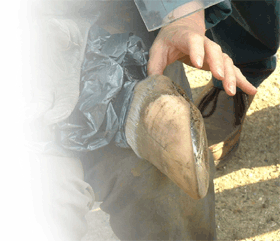
In Defence
When I attended her course I believed that the advice and demonstrations that she gave about trimming horses‘ feet were safe.
Reservations
Many of the problems attributed to her methods are to do with the knowledge and abilities of the lay trimmers using her methods. The "prescription" trim in the wrong hands may not take into account distortions and variations in individual horses.
It is a known problem that desperate horse owners occasionally trim their horses on their own. Their knowledge of the topic is nowhere sufficient after a two or three day seminar to perform even the most basic trimming. Unfortunately it is not uncommon that horse owners try to trim their horses after just having read about barefoot in the www. It is stated during all seminars that lay persons should not trim their horses without supervision by a SHP. (In the UK-basic seminars this is stated in the handouts). The training course to become a SHP is currently one year and will within the next year be extended to three years as the amount of knowledge is vast.
The Plastic Sheet (Plexiglas)
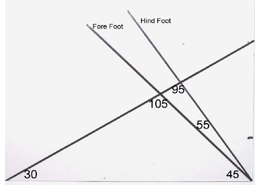
In Defence
The use of the plastic sheet used by Strasser Trimmers is an extremely valuable tool and that the angles are consistent with the vast majority of horses, whether they have laminitis or not. (see Strasser's plastic sheet)
The plastic sheet is used as a gauge to how the angles of a sound hoof should be. But when the deformation of the hoof is too great or when rehabilitation dictates a deviation from the angles and the heel height the SHP will not be able to trim the hoof in accordance with the plastic sheet.
Reservations
The angles are not constant in a small number of animals e.g. in foals and true club feet, and it is important to be able to identify these.
SHP´s are trained to do that
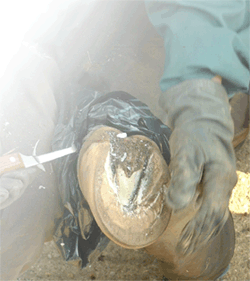
The Bars
In Defence
She has highlighted the significance of the bars in the horses‘ feet and advises the trimming of them. (see my notes on "The Bars" also the quotes of others)
Reservations
If done within reason.
Some hoof deformities require the bars to be trimmed almost entirely. In sound hooves the bars are left to protrude slightly over the level of the sole.
Ground-Parallel Pedal Bone
In Defence
She advocates trimming all horses‘ feet with a ground-parallel pedal bone. I believe that this is correct in laminitis.
Reservations
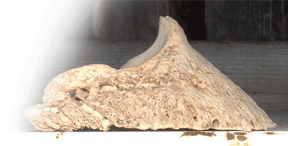
I picture the most stable position of the pedal bone, in relation to the hoof, to be with a ground-parallel pedal bone so that the forces on the laminae are evenly spread around the whole foot. If the foot is trimmed with a ground-parallel pedal bone, as the horse exercises at faster speeds and the hoof expands, the foot will spread causing tilting back of the pedal bone and putting unnatural stresses on parts of the foot. Consideration should be given to what exercise the horse will be doing and whether it is shod so that at maximum speed the pedal bone will not tilt back beyond the level.
So far I have not yet found any scientific study that monitors the movement of the pedal bone inside the hoof capsule when weight bearing except the video "Equine Foot Studies" Pollit, 1992 University of Queensland which shows clearly that the pedal bone moves down parallel to the ground when carrying weight.
I picture the most stable position of the pedal bone, in relation to the hoof, to be with a ground-parallel pedal bone so that the forces on the laminae are evenly spread around the whole foot. If the foot is trimmed with a ground-parallel pedal bone, as the horse exercises at faster speeds and the hoof expands, the foot will spread causing tilting back of the pedal bone and putting unnatural stresses on parts of the foot. Consideration should be given to what exercise the horse will be doing and whether it is shod so that at maximum speed the pedal bone will not tilt back beyond the level.
Hoof Mechanism
In Defence
She advises exercise rather than restriction, to improve function in the foot and to improve circulation. I believe that this has huge significance in the prevention of insulin resistance and laminitis.
Reservations
If there is instability in the foot in laminitis then walking the horse is likely to cause further separation and damage in the feet. This will be worse in horses trimmed with higher angles (more upright feet). Walking should only be done if there is sufficient stability of the pedal bone in the hoof, as indicated by the level of pain or lack of it.
It is taught (orally and in the course literature ("Hoofcare Specialists Handbook" H. Strasser and S. Kells, 2000) during the SHP training that the amount of movement has to be appropriate to the state of the rehabilitation. It is not uncommon that the amount of movement of a laminitic horse has to be restricted even when it had to be put on rubber matting to avoid hard impact that could further destabilise the pedal bone suspension (see also: H. Strasser "Who‘s afraid of founder" 2003, page 94). Also tight turns, longeing or turns on the fore hand have to be avoided sometimes. Still movement and the increased blood circulation is necessary for healing but the abilities of the individual have to be taken into consideration so as not to overstress it.
Furthermore you are mentioning the level of pain as an indicator for the appropriate amount of movement. Pain is a very important aspect during healing of damaged tissues as it is a natural mechanism that prevents the animal from over-stressing a hoof, a limb etc.. I do not reject the use of painkillers or other medication on principle but I caution the use of it in cases as described above where it is simply not an option to restrict the movement of the horse. Also many pain killers are toxic and have a detrimental effect on the organism. To deny painkillers to suffering animals is an emotionally and ethically difficult question to answer. I believe that the treatment of a patient with the purpose and the chance to heal, or at least to improve its condition, justifies the patient to suffer from a certain amount of pain. But the severity and duration of the pain needs to be cautiously assessed (with a Veterinarian) so as to stand in justifiable relation to the anticipated result of the treatment. (In this respect there are some parallels to rehabilitation of human patients.) The approach used in conventional veterinary medicine, which includes potent painkillers like phenylbutazone and box rest might reduce the amount of felt pain but will instead put the animal under psychological stress when it is denied free movement (if it chooses to do so) and the company of other horses.
Dr Strasser says that blood is drawn into the foot when the hoof expands as weight is applied. Logic (and Dr Pollitt) tells me that it must empty of blood when weight is taken. It is the pumping action that is the important factor for "hoof mechanism".
First of all I am glad that you agree with me on the ability of the hoof to pump blood. And as shoeing leads to a reduction of hoof mechanism and thus blood circulation I hardly believe that anybody (lay person, farrier or veterinarian) would agree that a reduced blood circulation could be healthy for any animal.
But as you might have expected I disagree with you on your idea of when and how the pumping effect of the hoof works.
It is undisputed that the hoof widens when weight bearing (J.R. Rooney, 1998, "The Lame Horse" / J.A. Allen, 1976, "Horse Anatomy" / H. Ruthe, 1959 "Der Huf" …).
When force is applied, the laminae attaching the pedal bone to the hoof wall and the corium located between the laminae and the pedal bone is stretched. Simultaneously the quarters are spread, the hoof widens, thus flattening the sole. The flattening of the sole results in a stretching of the sole corium that is attached to the concave underside of the pedal bone. The stretching of the corium leads to an increase in hoof volume (a fact that is denied by many veterinarians as the hoof wall of shod hooves, even when widening at the bars, usually is bent down- and inwards and therefore the hoof volume remains roughly the same (J. Hickmann, J.A. Allen, 1976 "Farriery").
The stretched corium is filled with arterial blood and when the weight is taken of the hoof, the hoof capsule returns to is smaller size and the blood is pressed out of the corium into the venous plexus in the coronary band.
During the next weight bearing stage the widening cartilages are pushed against this venous plexus at the same time further pressure is applied by the coronary band as it sinks down somewhat onto the hoof capsule. This presses the venous blood up into the veins of the leg. The impression is created that the blood is pumped out of the hoof when it carries weight but this is not the case (see Pollit Video "Equine foot studies" and compare the recording of the dead leg where the blood vessels have been filled with a fluid, with the x-ray film that records the filling of the hoofs blood vessels that fill with a contrast fluid when weight is put on).
Frequent Hoof Trimming
In Defence
Because the horses are not shod then it is easy to trim the feet very regularly which will help to correct distortions in the non laminitic foot and to help to prevent distortions in the laminitic foot.
Reservations
None
Keeping All Horses Unshod
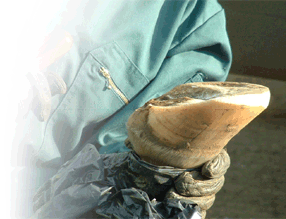
In Defence
Some horses cope perfectly well unshod. Consideration should be given as to whether a horse need to be shod or not, and will depend on the individual, the environment and the type of work it will be required to do.
Reservations
This should be thought about rather than just shoeing horses because that is the "done thing". Horses should be shod if they need to be.
In conclusion:
It is my opinion that Dr Strasser and the "Strasser Trim" should not be rejected out of hand. I believe that some of her ideas are of great significance particularly in dealing with the laminitic horse or pony.
1: The foot trimmed with a ground-parallel pedal bone - I agree with this only in the laminitic. Others disagree with this (see How should we trim the chronic founder ?.)
2: The use of her plastic sheet to identify the position of the pedal bone in the hoof without the use of x-rays.
The plastic sheet is a gauge that shows the angles of a sound hoof. When trimming a deformed hoof with the purpose of changing it, then the SHP will often apply a different heel height and occasionally even a different coronet angle. The location of the pedal bone within the hoof capsule is roughly indicated by the appearance of the hoof capsule, the coronet and the deviation of the other bones in the leg.
3. Pointing out the advantages of the "hoof mechanism", even if, in my opinion, she has the input and output of blood in the hoof to be the wrong way round.
4. Frequent trimming of the feet, particularly in chronic founder cases.
5. The trimming of the bars. - I agree with this but others disagree (see The Bars & quotes on bars)
It is perhaps the practice rather than the theories that we should be cautious of.
I believe that the "Strasser Trim" is not so suitable in the non-laminitic horse and is often too severe.
It is interesting to see how many people believe that a SHP will trim every hoof twice a week until blood flows. Obviously that is terribly wrong and a huge misunderstanding. In sound hoofs trimming is hardly necessary at all and restricted to an occasional balancing of the hoof. Even in a deformed hoof trimming frequency can vary from every three days, when regrowth is fast and uneven, to longer intervals.
Horse owners who decide to follow Dr Strasser‘s theories and trim are told that their horse may be lame for up to a year until the "new" horn can grow from the top to the ground. This is obviously not going to be a great selling point for a vet or a farrier to advise owners to do but, in defence, many of the people who decide to follow Dr Strasser‘s theories have horses that are lame and have been told by their vet or farrier that the horse will not get better and should be put down.
The fact that many horse owners contact a SHP as a last resort explains why rehabilitation often is a lengthy business. The horse has in many cases undergone traditional treatment and suffering for years and not only did this treatment not succeed in curing the patient, but in cases of chronic founder the long time tip-toe position of the pedal bone greatly damages the bone structure and many other tissues.
This makes rehabilitation very difficult and in cases when the damages have become too severe healing may be impossible. Understandably public interest is greater in such cases than in the ones where treatment was successful.
Many of the people who are critical of Dr Strasser have never attended one of her courses or read her books. My criticism after I attended her course was that she was selective of the science she uses, but when it comes to matters of the horse‘s foot then I believe we are all guilty of that. I certainly am.